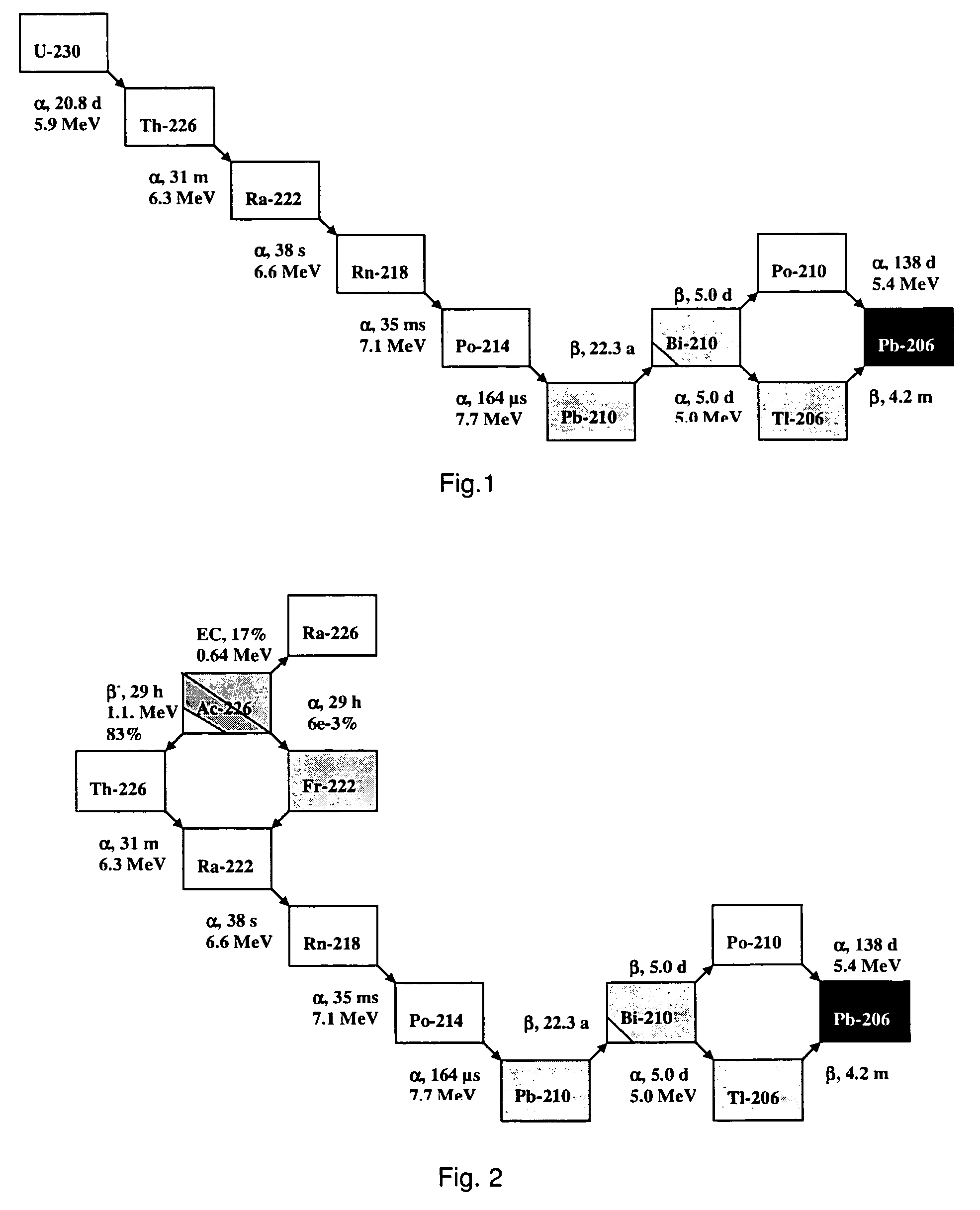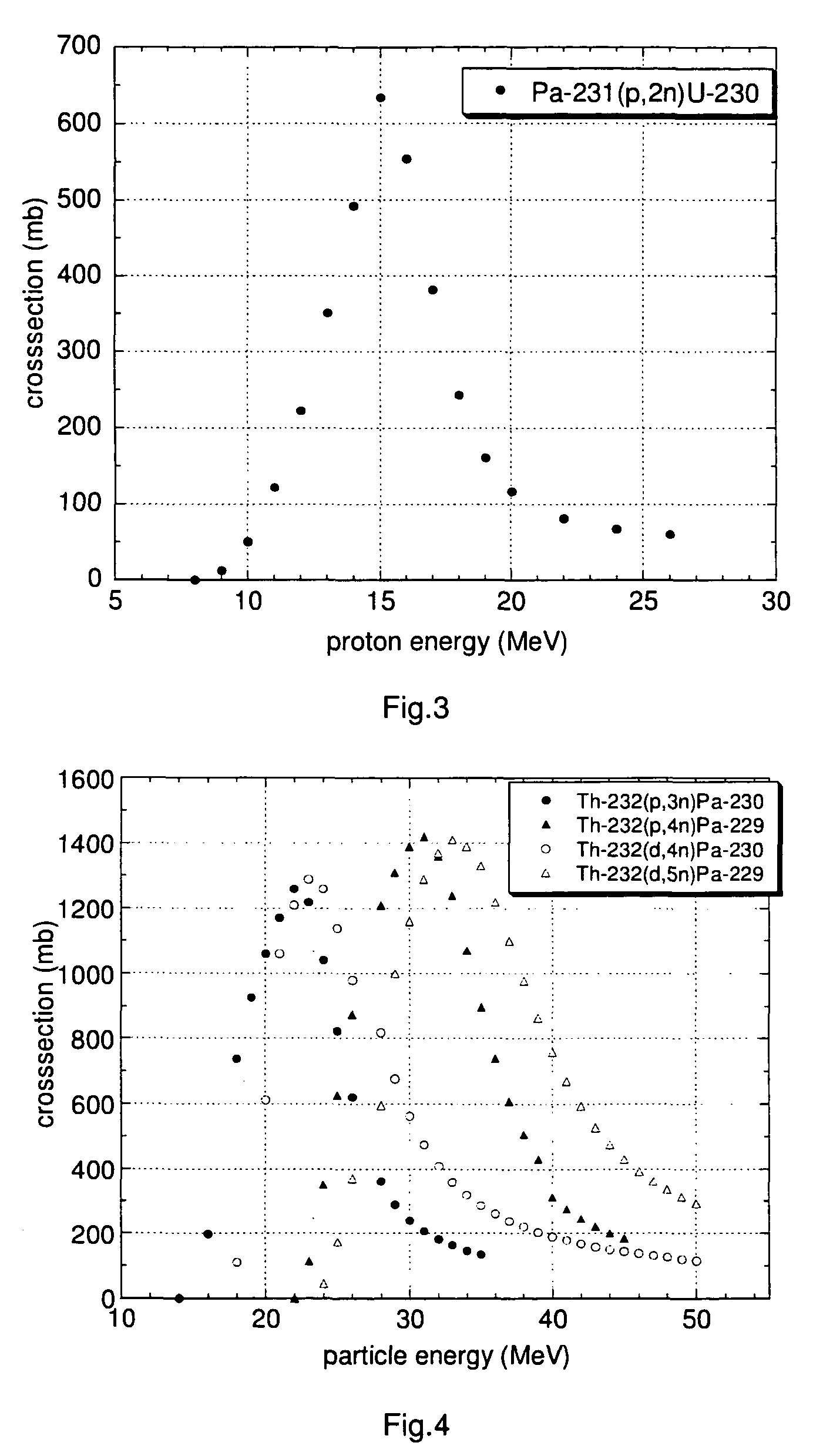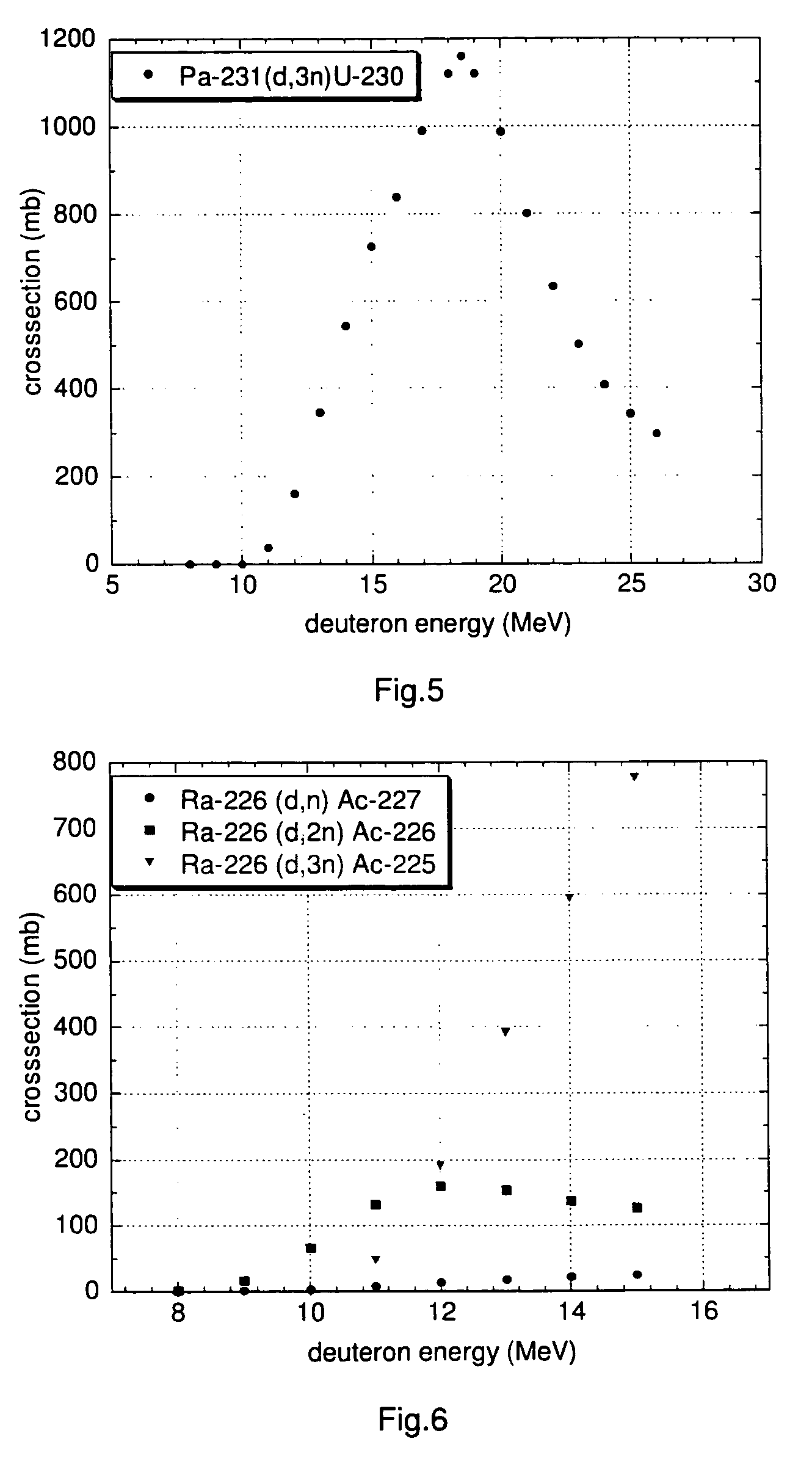Radionuclides for medical use
a technology of radionuclides and radioactive materials, applied in the field of radionuclides, can solve the problems of limited availability of suitable alpha-emitting radionuclides in sufficient quantities for widespread medical use, hematological toxicities, and the relapse of most patients, and achieve the effect of convenient adaptation to us
- Summary
- Abstract
- Description
- Claims
- Application Information
AI Technical Summary
Benefits of technology
Problems solved by technology
Method used
Image
Examples
example 1
[0152]A particularly preferred U-230 / Th-226 radionuclide generator is designed as follows.
[0153]U-230 is loaded onto a column containing the extraction chromatographic material TEVA® (Eichrom Technologies Inc.; this material includes as active component an aliphatic quaternary amine) from hydrochloric acid solution, e.g. 6 M hydrochloric acid. Preferentially, silica gel is used as inert support material for the extraction chromatographic material TEVA® in order to increase the radiation resistance of the generator material and to minimise its radiolytic degradation. Th-226 can be eluted from the generator using 6 M hydrochloric acid with a yield of approx. 90% in 4-6 column bed volumes, while U-230 remains on the generator. A peristaltic pump can be used for the elution of the generator to facilitate automation of the elution process.
[0154]It has been observed that more than 100 elutions of thorium using 4-6 bed volumes of 6 M HCl could be performed from a U / Th radionuclide generato...
example 2
[0158]A U-230 radiopharmaceutical for targeted radiotherapy is prepared as follows. The radionuclide U-230 is mixed with a buffered solution of a chelated carrier molecule in e.g. using sodium acetate buffer at pH 5-7 and incubated for an appropriate time, e.g. 1 hour. Purification of the U-230 radioconjugate can be performed using size exclusion chromatography or ion exchange procedures, followed by sterile filtration. A pharmaceutically acceptable carrier or excipient can be added and / or a scavenging agent.
example 3
[0159]For the use of U-230 in pre-targeted radiotherapy, the radionuclide is mixed with a buffered solution of chelated biotin or another suitable carrier molecule and incubated for an appropriate time. Purification of the obtained U-230 radioconjugates can be performed using high performance liquid chromatography or ion exchange procedures and sterile filtration.
[0160]Representative conditions for forming radioconjugates are given here. To a solution containing U-230 in 0.2 M ammonium acetate, pH 5.0, containing approximately 10 mg / mL of ascorbic acid as a radioprotectant, 2 μg of chelated biotin in 1 μl of 0.2 M ammonium acetate, pH 5.0, are added. The reaction mixture is incubated for 1 h, after which 10 μl of a solution containing 1.5 mg / ml DTPA, pH 5.0, are added. The reaction mixture is incubated at room temperature for 60 min, after which radiochemical purity is determined by thin layer chromatography. A pharmaceutically acceptable carrier or excipient can be added as well as...
PUM
 Login to View More
Login to View More Abstract
Description
Claims
Application Information
 Login to View More
Login to View More - R&D
- Intellectual Property
- Life Sciences
- Materials
- Tech Scout
- Unparalleled Data Quality
- Higher Quality Content
- 60% Fewer Hallucinations
Browse by: Latest US Patents, China's latest patents, Technical Efficacy Thesaurus, Application Domain, Technology Topic, Popular Technical Reports.
© 2025 PatSnap. All rights reserved.Legal|Privacy policy|Modern Slavery Act Transparency Statement|Sitemap|About US| Contact US: help@patsnap.com



